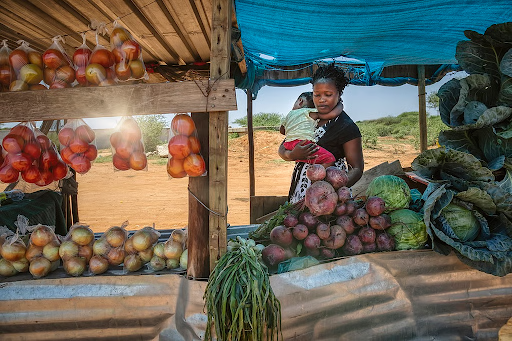



The 2025 FAO report reveals a decline in over 60% of Sustainable Development Goal (SDG) indicators for food and agriculture since 2015. Food insecurity affects 2.3 billion people, with women's dietary diversity decreasing. The report emphasizes the need for global intervention to prevent a crisis.

Copyright infringement not intended
Picture Courtesy: DOWNTOEARTH
A recent FAO report, "Tracking Progress on Food and Agriculture-Related SDG Indicators 2025," indicates that 56 countries will miss the low hunger target by 2030 if current trends continue. The report also introduces the Minimum Dietary Diversity (MDD) for women as a new measurement tool.
A new key indicator measures progress toward SDG 2 (Zero Hunger) by assessing diet quality and the risk of micronutrient deficiencies.
Definition: MDD-W measures the proportion of women of childbearing age (15-49 years) who have consumed food from at least five out of ten predefined food groups within the previous day. The 10 Food Groups:
Achieving this minimum diversity is a strong indicator that a woman's diet is adequate in essential micronutrients required for her health, well-being, and productivity.
|
Significance of Dietary Diversity Lack of dietary diversity is a primary cause of "hidden hunger" or micronutrient deficiency. This condition has severe consequences:
|
A Global Deficit
Stark Regional Disparities
Regions with Better Performance
A Trend of Deterioration
The report reveals a concerning trend: the world is failing to meet its nutrition goals, with dietary diversity generally declining over time.
Link to Systemic Failures
Low dietary diversity is linked to agrifood system failures, including the scarcity of nutritious, affordable food and ongoing food insecurity.
Cost and Affordability
Economic downturns and rising food prices make nutrient-dense foods (fresh produce, eggs, meat, milk) unaffordable for the poorest households.
Availability of Nutritious Foods
Current food systems prioritize large-scale production of staple crops (rice and wheat), leading to imbalances in the market and supply of diverse, nutrient-rich options.
Conflict and Climate Shocks
Ongoing conflicts, economic instability, and the impacts of climate change (droughts and floods devastating diverse crops) contribute to the lack of progress in improving dietary diversity since 2016.
The FAO emphasizes that achieving the 2030 targets requires urgent, coordinated action across multiple sectors.
Implement Nutrition-Specific Actions: Promote initiatives like dietary education, fortification of staple foods, and providing micronutrient supplements to vulnerable populations.
Strengthen Nutrition-Sensitive Systems: True progress depends on broader systemic changes:
Invest in Data and Monitoring: Continue to invest in collecting high-quality data on dietary diversity to track progress, identify hotspots of malnutrition, and design evidence-based policies.
The FAO's 2025 report highlights the critical need for diverse, nutritious diets for women to achieve sustainable development and Zero Hunger by 2030. Without global food system changes and reduced inequality, the health crisis facing millions of women and future generations will persist.
Source: DOWNTOEARTH
|
PRACTICE QUESTION Q. Achieving gender equality is intrinsically linked to eradicating hunger. Critically analyze. 150 words |
The FAO is a specialized agency of the United Nations that leads international efforts to defeat hunger and improve nutrition and food security. It works to achieve a world free from hunger by promoting sustainable agriculture, forestry, and fisheries.
Sustainable development is a framework for achieving growth that balances the needs of the present without compromising the ability of future generations to meet their own needs. It harmonizes the goals of economic growth, social inclusion, and environmental protection.
The SDGs are a set of 17 interconnected goals adopted by the United Nations in 2015. They provide a universal framework for countries to address global challenges by 2030, including poverty, inequality, climate change, and environmental degradation.





© 2025 iasgyan. All right reserved